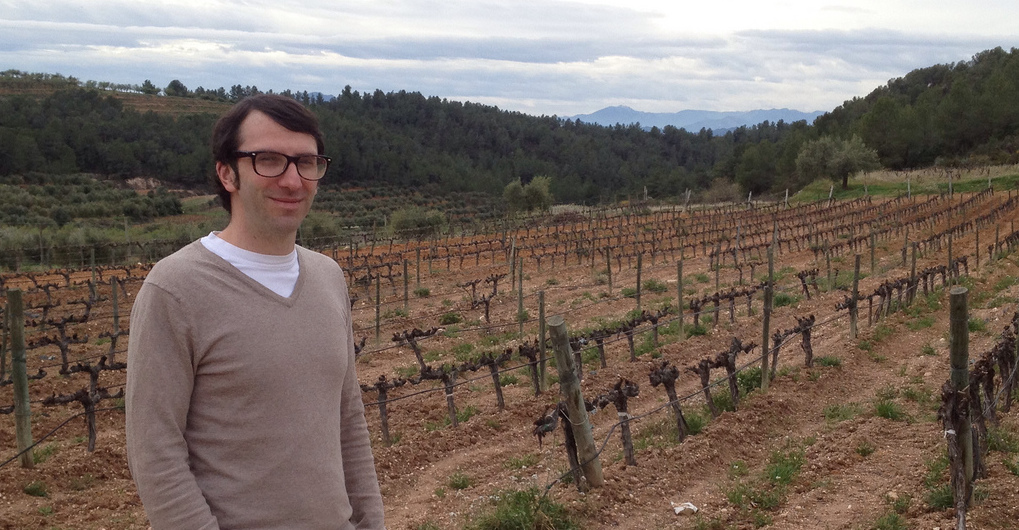
You may already be familiar with Talia Baiocchi from her work on Eater and Wine Spectator, just to name a few outlets where her wine writing has appeared. But with PUNCH, an online magazine where Baiocchi is Editor-in-Chief, there's much more of a storytelling focus on the broader world of drinks. As well as on the broad subjects that surround or influence our drinking pleasure, whether accessed via corkscrew, cocktail shaker, or church key.
For our SpeakEasy series of interviews, I ask Baiocchi about what "PUNCH" represents, learn to never bring up pumpkin beer, and confess my sherry shame. I also find out who inspires her and where she likes to eat and drink in New York City. Look out for Baiocchi's book, "Sherry", coming this fall.
I can’t believe PUNCH was available as a name. Did you have to pinch yourself to make sure it was real? What does the name PUNCH mean to you and what would you like it to convey to your readers?
I see what you're doing here, Jameson Fink. You want me to say I had to "punch" myself to make sure it was real. I will not take the pun bait.
The name resonated with us for many reasons, but perhaps most importantly punch—the flowing bowl, if you will—represents community, conviviality and experimentation. And we wanted PUNCH to be the sort of place where everyone could come and dip their cup in, so to speak, and come away feeling fulfilled. Or at least pleasantly intoxicated.
There was also the element of mixing many elements (some that might seem at odds) together to create something both harmonious and potent. With PUNCH, a lot of people said to us, you know, "The wine and cocktail/spirits worlds are too different; the crowds and cultures are not the same and it doesn't make sense to try and cover them both with the same sort of rigor, in the same place."
But we saw it differently and built the site on the premise that the wine and cocktail worlds share more in common than they might realize. So, the magazine is a literal mixing of these culture as a means to better understand each one. Hence, PUNCH. (We also just really like drinking punch.)
A lot of booze writing, especially wine, is along the lines of “I drank this and this is how it tasted to me.” How did you set out to make PUNCH distinct from other publications talking about beer, wine, and spirits?
Like any site that covers drinks, we wanted to talk about, say, what, specifically, about a wine region makes it produce wine that tastes a certain way; or what about the production process of mezcal makes it completely unique. Those sorts of stories exist on the site, but we wanted to broaden things a bit. I have always felt like a lot of drinks content out there was either purely service (reviews, round-ups and content like you describe) or felt so specific that it could only appeal to a very small group of people who are already interested in the minutiae of the subject. But there's a lot you can do in between.
To explore that, we make it a point to pursue stories that use drinks as a lens to understand places, people, subcultures, events, and broader notions of things like authenticity, sustainability, tradition, and community. And we want to present these connections in an engaging, personal (sometimes even absurd) way rather preaching from on high.
We also wanted to talk more about the point of consumption, about how and why we attach value to certain drinks and how they fit into our lives in different ways. To quote one of our writers, Steven Grubbs, who said referring to wine that, yes, it comes from a place—a patch of earth—and that place gives it its essential character. "But we fill in the rest." That filling is culture and our goal is to dig into it and see what we can find.
There have been posts about black metal, dive bars at 7am, fanny-pack boozing, and a consideration of the 40 ouncer. Is anything off-limits?
Low-calorie wine. And pumpkin beer. No pumpkin beer.
Speaking of the 40 ounce, I was disappointed to read that Michael Madrigale has a puny 12 ounce beer as his shift drink. I thought he would enjoy a large format on and off the job. Are sommeliers really cheap wine aficionados and pilsner proponents?
It's funny because wine people are often chided for only drinking shitty lager or lighter styles of German beer like pilsner and kolsch (myself included). In fact, the odd juxtaposition of fine wine and Mexican lager, specifically, has become a sort of wine world trope thanks to Instagram.
(Ed. note: This video of New York City porron-pouring is emblematic of what you'll find on PUNCH.)
One beverage that’s a sommelier darling is sherry. And, hey you’ve got a book about it coming out this fall. Which is touted as "the first non-academic book on the subject in decades” and a book that will be “not winey or technical, but written for the consumer." How do you get the average consumer interested in the world of sherry?
You ready for a long answer?
Well, first sherry is a wine and I think a lot of consumers who have never had it think it's something fundamentally different. They think sweet, warm bottle of Harvey's Bristol Cream and an afternoon game of bridge. And who the hell (under 80) wants to get in involved in that? That misconception is becoming less prevalent, but it's hard to undo nearly a hundred years of mixed messages overnight.
That said, we're living in a time wherein people are more open and adventurous than ever. And the sheer notion that what they think of sherry is at odds with the actual wines tends to inspire curiosity. People genuinely want to find out what they've been missing.
The first step beyond that, as easy as it sounds, is presenting sherry with food. In a general sense, sherry has the ability to telegraph flavors that don't exist in other wines (i.e. they are straight-up not about fruit) and for that reason it can be truly and enlightening in the context of the dinner table.
Cocktails have also offered a gateway. A lot of people who are crazy about sherry as a wine on its own first discovered it in a drink. Plus there's a whole lot of history behind the modern sherry cocktail boom. Most people don't know, for example, that it was a major ingredient in 19th-century cocktailing and the base of one of the greatest cocktails ever invented (The Sherry Cobbler). In fact, in America our history of sherry consumption has long been tied to cocktails and it's fascinating to see history repeat itself in this way. I think it's a major factor in sherry's revival and its continued success here.
And lastly, and perhaps most importantly: Telling people about the sherry region. In all of its idiosyncrasy, triumph, and failure sherry the wine is truly an embodiment of sherry the place. And its history is one of the most remarkable in the entire history of wine. But because it skipped basically two whole generations in the US, most people have no idea even where it comes from, let alone how it is uniquely tied to the food, music, and lifestyle in Andalusia. So, for me, the whole story of sherry is what's important to translate. And, in my experience it's perhaps the most powerful force in getting people into it.
Confession: The last time I had sherry was a year ago at The Beagle in NYC. I believe I had a Manzanilla that I found so extremely salty I had to have a beer back to finish it. Am I a sherry simpleton? Is my admission shocking and/or appalling to you? How would you right this wrong?
Well, first of all, there is never anything wrong with a beer back. Ever. That's actually kind of Andalusian of you, frankly. But second, you are hardly a simpleton. The extreme dryness of the wines is part of what gives that intense note of salinity. Same is true of something like dry Riesling from the Mosel from a producer like Weiser Kunstler or Clemens Busch. They're almost shocking to drink for the first time. But like great dry Riesling, great manzanilla (or fino) has the ability to literally make you want to eat.
So, as to how I'd right your wrong: I'd give you some jamón de bellota and that same glass again. What you really needed was a jamón back.
Where do you like to drink wine in New York City? And what are a couple non-fancy pants places where you like to eat?
For wine: Maison Premiere and Reynard in my neighborhood. I love Franny's, though I haven't been in too long. In the city, Pearl & Ash, Narcissa, Maialino, Charlie Bird, the list goes on. Also: the newly opened Racines has an incredible list that is almost absurdly affordable.
I have two restaurants that I eat at most frequently right now: Uncle Boons, which is truly fantastic Thai food. And St. Anselm, which is a sort of modern Williamsburg version of a steakhouse. Both are affordable, delicious and have a real strong sense of identity.
Who inspired you to write about wine who continues to influence you today?
To this day there are two books I read in college that remain formative for me: Kermit Lynch's Adventures on the Wine Route and The Accidental Connoisseur by Lawrence Osborne. Those are books that are about wine, yes, but more about passion, curiosity, and discovery. And in the process of gaining knowledge and experience I try to never lose sight of not only what led me to wine, but also the sorts of stories that made me fall in love with it.
As for who influences me today, there are so many people both in and outside of the industry that continue to inspire. Within the industry: Jon Bonné and Eric Asimov remain the two beacons for me. Both of them are great journalists that have found a way to combine wine criticism with passion and storytelling.
And now that I am in the position to be editing more writers than ever before, I am constantly being inspired by the talented people that I've had the privilege of working with. Some of them we all know well, others we will surely get to know much better in the near future. As a writer, there is nothing more inspiring than reading great writing. And I am thankful everyday that I get to do what I do.










